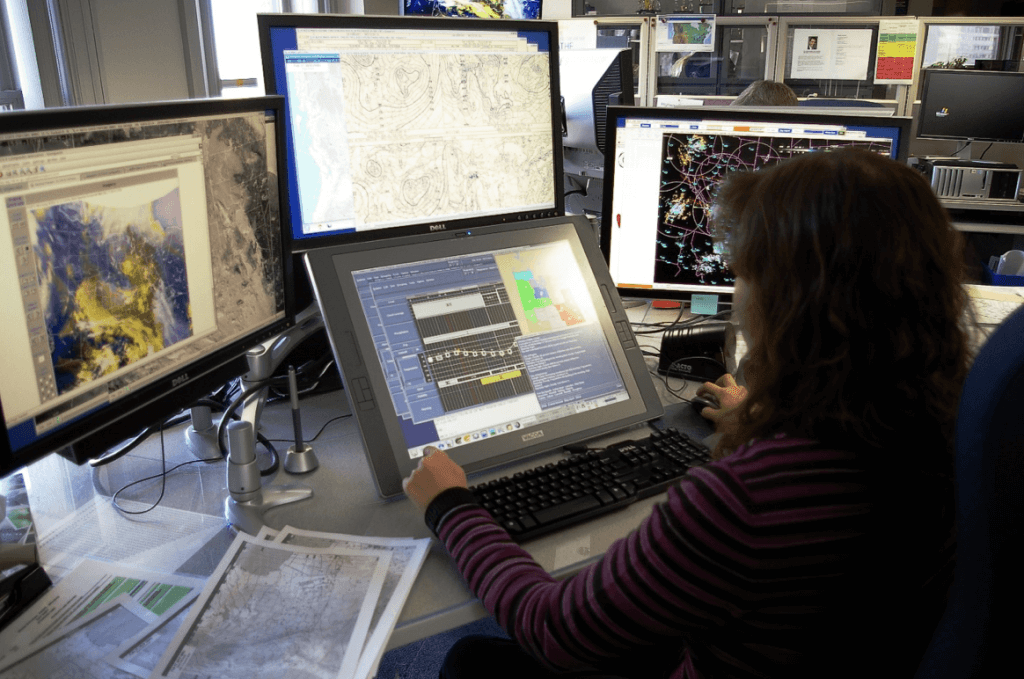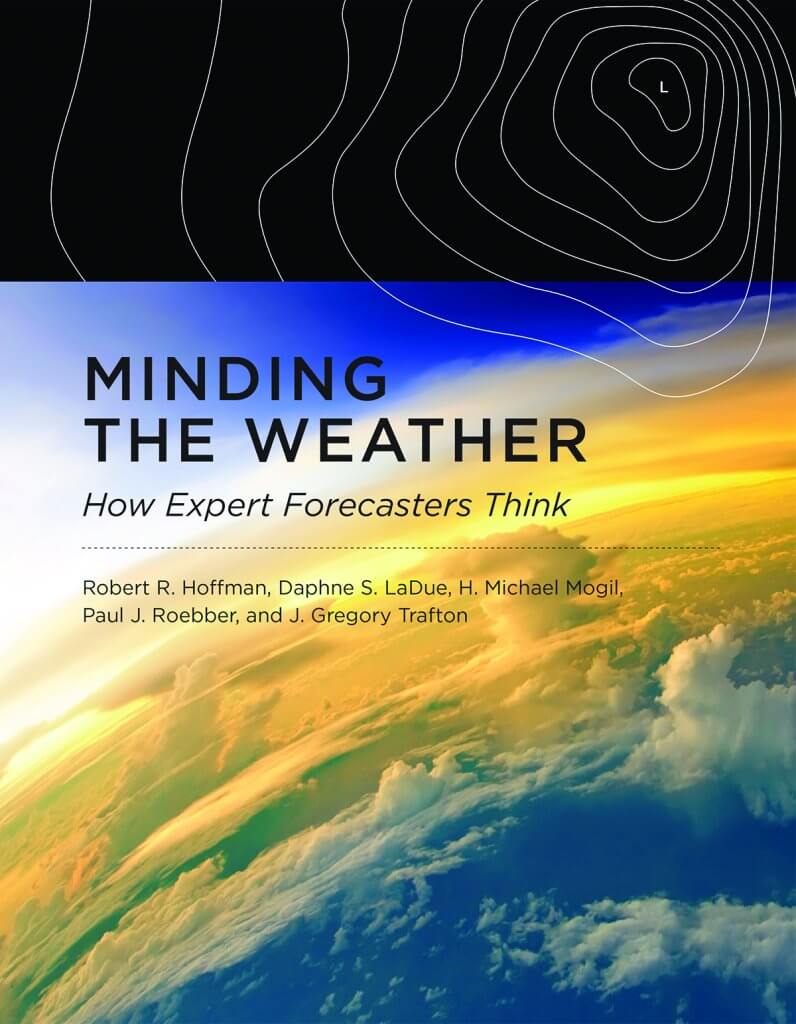
Minding the Weather – How Expert Forecasters Think
– Review by Patrick McCarthy –

Mission-critical systems often rely on technology and highly-trained specialists. Weather prediction is among the most important and complex of these activities, having both prediction and response components. The authors of Minding the Weather: How Expert Forecasters Think, examine how a few meteorologists become high-performing experts in their field.
The authors begin by giving an overview of the weather prediction workspace and how it has evolved. They examine the type of person who becomes a forecaster, including the challenges of academics and recruitment. They explore how training in a team-oriented, dynamic, and technological environment helps produce a journey-level forecaster.
Experience allows forecasters to become proficient in their abilities. However, that does not make them experts. The authors demonstrate that forecasters who rely on weather models, rules of thumb, etc., numb their professional growth.
To better understand how expert meteorologists think, the authors examined studies on the Critical Decision Method and concept mapping. They illustrate that expert forecasters take different and more complex approaches. Expert forecasters have built up a range of abilities, including a broader understanding of the organization, an extensive mental library of past cases (successes and failures), and a willingness to tell stories and share lessons learned. They have a high appreciation of client needs, and they often think in a more abstract way.
The authors demonstrate that the cognitive effort in weather forecasting is primarily a visual one. Forecasters spend a significant portion of their time looking at weather and model information. This data covers many scales in space and time. Meteorologists rely on many displays in their workspaces (Figure 1). The 4-dimensional data is presented on 2-dimensional displays requiring significant mental resources for integration and interpretation. Complicating this process are data errors, missing data, and conflicting information. Furthermore, forecasters are consuming and integrating this information while under the duress of deadlines, administrative duties, team dynamics, user demands, etc. The authors show how expert forecasters rise above these challenges.
The remainder of the book covers the relationship between the human forecaster and weather prediction models. The focus is on whether computers will be replacing forecasters or whether there is an optimal forecaster-computer mix. The authors note that investments into new numerical models often come at the expense of reduced staffing, training, and the development of more effective operational forecaster tools.
One example the authors cover is the Meteorological Service of Canada’s Project Phoenix. This experiment found that forecasters were becoming too dependent on weather models to the detriment of their performance. New forecaster training was implemented, resulting in a more effective human-machine balance and improved overall performance.
In summary, the authors present a comprehensive examination of the cognitive aspects regarding how weather forecasters think and how some emerge as experts. These insights offer opportunities to improve forecaster performance. They also present a cautionary tale that human expertise is threatened by the overreliance on technology, the dilution of forecaster training, and the devaluation of the role of well-trained meteorologists in the weather enterprise.
The authors’ 488-page book is well-written, though some non-meteorological examples feel a bit superfluous at times. A broader representation of examples from other national weather services might have been further enlightening. The book’s extensive bibliography is a goldmine for people who want to understand and foster expertise in their organization. The book should be a fixture in weather offices, everywhere.

By Robert R. Hoffman, Daphne S. LaDue, H. Michael Mogil, Paul J. Roebber, and J. Gregory Trafton, published by the MIT Press. 488 pp., 7 x 9 in, 82 b&w illus., 21 color plates
Paperback USD 55.00 (2017 hard cover version is out of print)
ISBN: 9780262548816
Published: August 15, 2023
Patrick McCarthy is a retired Meteorological Service of Canada meteorologist. Throughout most of his career, he promoted innovative approaches to advance forecaster performance and to modernize forecast operations. He was co-founder of Project Phoenix mentioned in the article. Patrick finished his career as Head of the Prairie and Arctic Storm Prediction Centre.
book review, minding the weather, Patrick McCarthy, weather forecast
